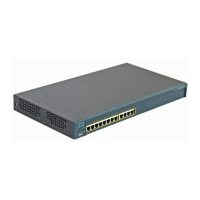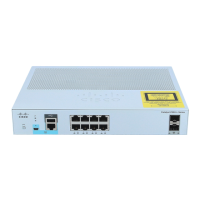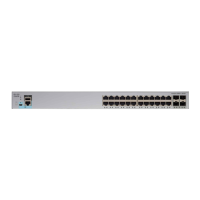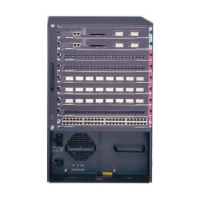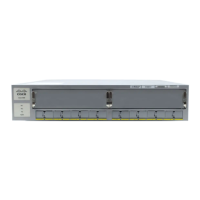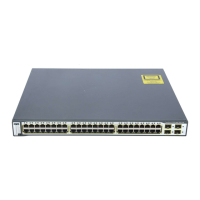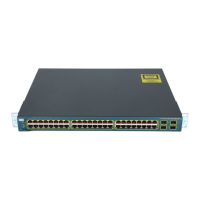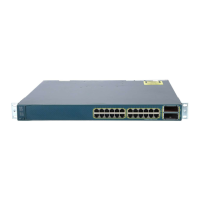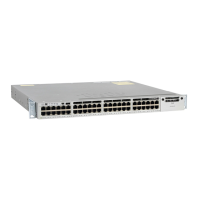Chapter 6 Configuring the System
Configuring STP
6-24
Catalyst 2900 Series XL and Catalyst 3500 Series XL Software Configuration Guide
78-6511-05
Configuring STP
Spanning Tree Protocol (STP) provides path redundancy while preventing
undesirable loops in the network. Only one active path can exist between any two
stations. STP calculates the best loop-free path throughout the network.
Supported STP Instances
You create an STP instance when you assign an interface to a VLAN. The STP
instance is removed when the last interface is moved to another VLAN. You can
configure switch and port parameters before an STP instance is created. These
parameters are applied when the STP instance is created. You can change all
VLANs on a switch by using the stp-list parameter when you enter STP
commands through the CLI. For more information, refer to the
Catalyst 2900 Series XL and Catalyst 3500 Series XL Command Reference.
All Catalyst 3500 XL switches and most Catalyst 2900 XL switches support
250 VLANs. The Catalyst 2912 XL, Catalyst 2924 XL, and Catalyst 2924C XL
support only 64 VLANs. For more information about VLANs, see Chapter 8,
“Configuring VLANs.”
Each VLAN is a separate STP instance. If you have already used up all available
STP instances on a switch, adding another VLAN anywhere in the VLAN Trunk
Protocol (VTP) domain creates a VLAN that is not running STP on that switch.
For example, if 250 VLANs are defined in the VTP domain, you can enable STP
on those 250 VLANs. The remaining VLANs must operate with STP disabled.
You can disable STP on one of the VLANs where it is running, and then enable it
on the VLAN where you want it to run. Use the no spanning-tree vlan vlan-id
global configuration command to disable STP on a specific VLAN, and use the
spanning-tree vlan vlan-id global configuration command to enable STP on the
desired VLAN.
Caution Switches that are not running spanning tree still forward Bridge Protocol Data
Units (BPDUs) that they receive so that the other switches on the VLAN that
have a running STP instance can break loops. Therefore, spanning tree must
be running on enough switches so that it can break all the loops in the network.
For example, at least one switch on each loop in the VLAN must be running
spanning tree. It is not absolutely necessary to run spanning tree on all
